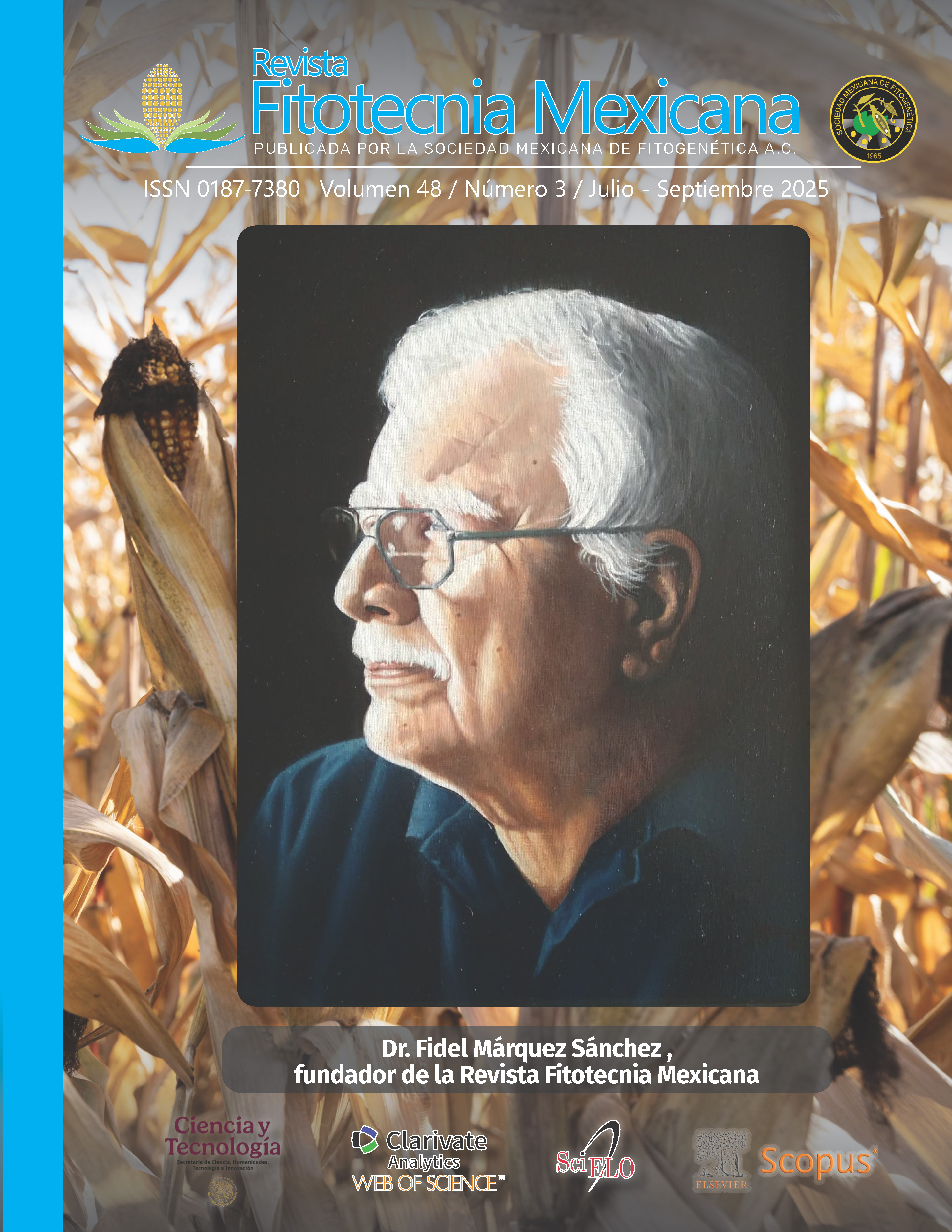THREE CYCLES OF MODIFIED EAR-TO-ROW SELECTION IN ZAPALOTE CHICO CORN
Main Article Content
Abstract
Many producers of maize (Zea mays L.), mainly of subsistence, grow early landraces to get grain in a shorter time and to plant two or three times a year; these native varieties of the Zapalote Chico and Zapalote Grande landraces are grown in 34 communities in seven of the 10 Rural Development Districts of Chiapas, Mexico, but there are still no improved varieties derived from them. For this reason, six samples from producers were used with the aim of initiating a breeding method and producing an improved variety. The maize composite used had germplasm of the Zapalote Chico, Zapalote Grande and Tuxpeño landraces, thus, pre-breeding was carried out to purify it for plant and ear characteristics typical of Zapalote Chico. Three cycles of modified ear-to-row maternal half-sib selection were carried out to standardize the type of plant, earliness and improve grain yield. In the 2024 Spring-Summer season, 155 families were evaluated in one locality, plus cycle 2 (C2) as a control, under a 13 × 12 rectangular simple lattice experimental design, in plots of a 3-m single row with 16 plants, at a population density of 88 thousand plants ha-1. Measured variables were days to female and male flowering, plant and ear height in cm, and grain yield in t ha-1. Analysis of variance and a mean test with the significant honest difference were performed. Significance was found for days to female and male flowering and for grain yield, with averages of 47, 49 days, and 3.879 t ha-1, respectively. From the statistically superior families, the best 24 were selected with yields of 5.691 to 4.531 t ha-1, and with remnant seed from them, a plot of genetic recombination was planted, to re-select 155 new half-sib families to continue the fourth selection cycle.

